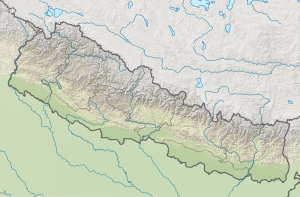|
Modi Rural Municipality
Modi is a Rural municipality located within the Parbat District of the Gandaki Province of Nepal. The rural municipality spans 143.6 square kilometres (55.4 sq mi) of area, with a total population of 21,284 according to a 2011 Nepal census.[1][2] On March 10, 2017, the Government of Nepal restructured the local level bodies into 753 new local level structures.[3][4] The previous Deupurkot, Bhuktangle, Deurali, Kyang, Bajung, Tilahar, Ramja Deurali and Chitre VDCs were merged to form Modi Rural Municipality. Modi is divided into 8 wards, with Deupurkot declared the administrative center of the rural municipality. DemographicsAt the time of the 2011 Nepal census, Modi Rural Municipality had a population of 21,312. Of these, 87.5% spoke Nepali, 8.3% Magar, 3.4% Gurung, 0.1% Kham, 0.1% Rai, 0.1% Tamang, 0.1% Newar and 0.4% other languages as their first language. In terms of ethnicity/caste, 24.3% were Hill Brahmin, 23.5% Chhetri, 14.2% Magar, 13.0% Kami, 6.3% Sarki, 6.2% Damai/Dholi, 5.4% Thakuri, 4.4% Gurung, 0.9% Sanyasi/Dasnami and 1.8% others. In terms of religion, 83.0% were Hindu, 16.1% Buddhist, 0.6% Christian, 0.1% Muslim, 0.1% Kirati and 0.1% others.[5] References
External links
|
||||||||||||||||||||||||||||||||||||||||||||
Portal di Ensiklopedia Dunia


